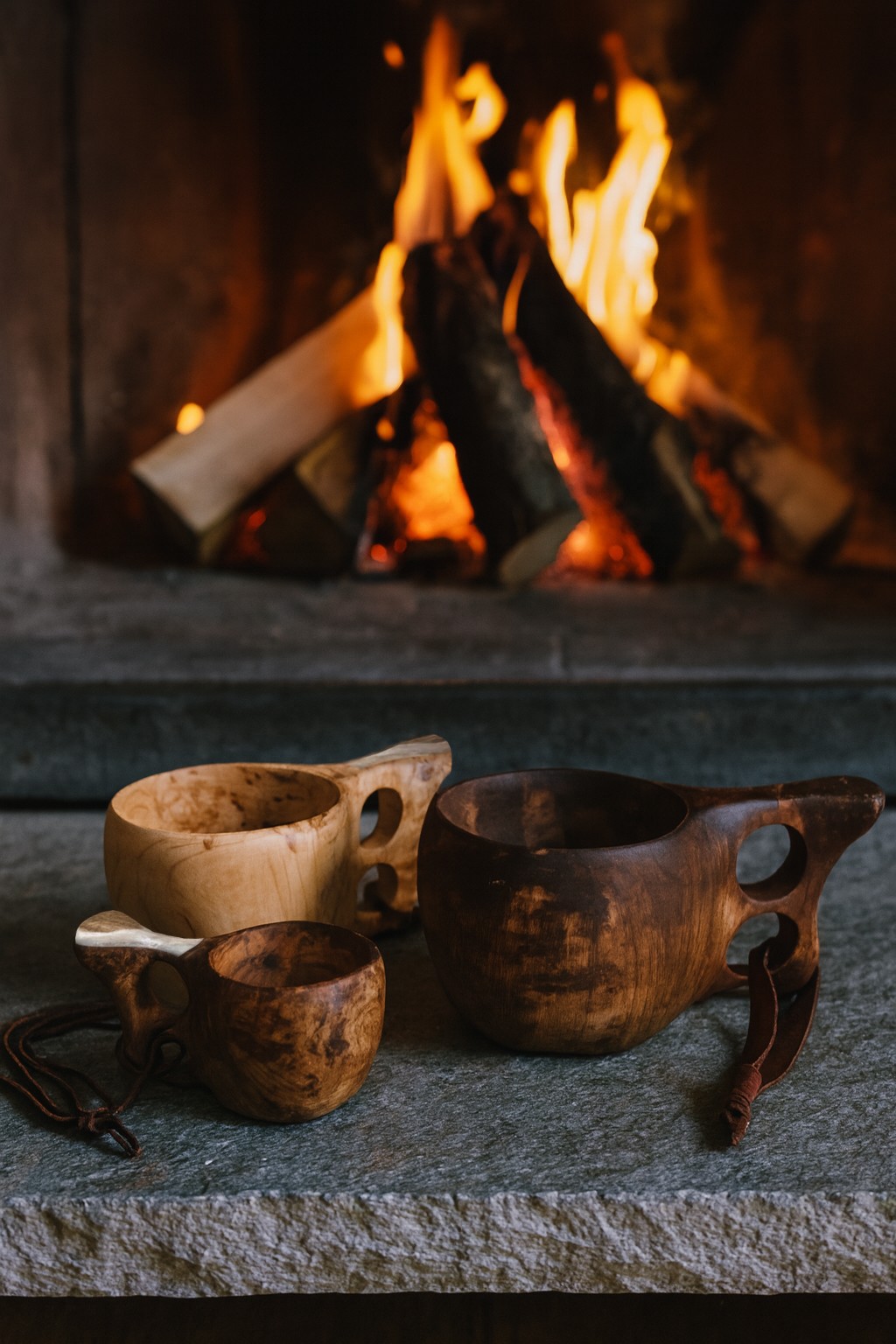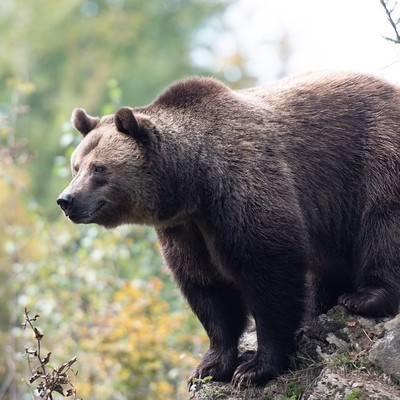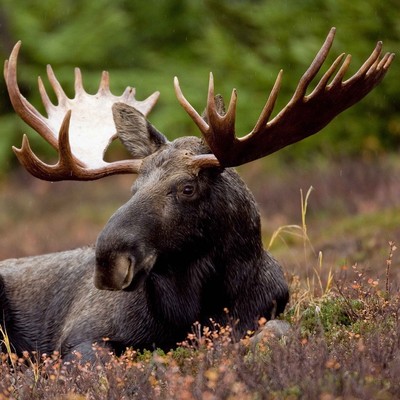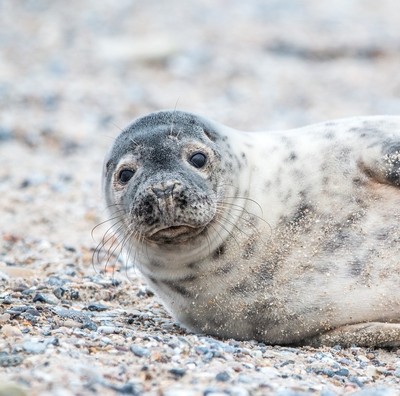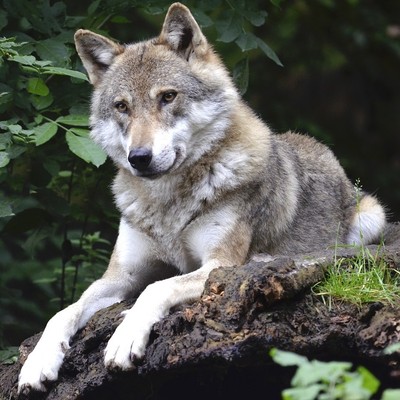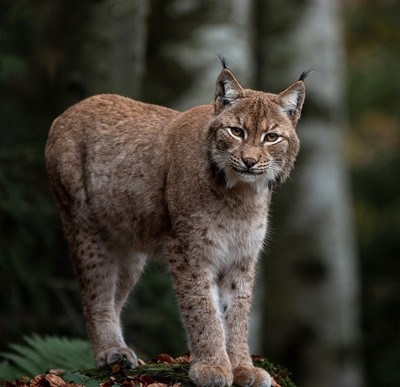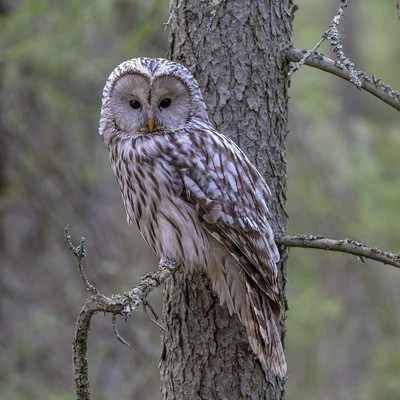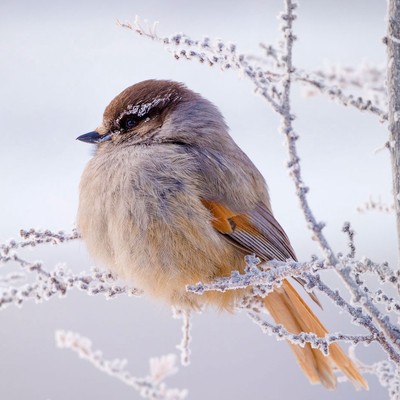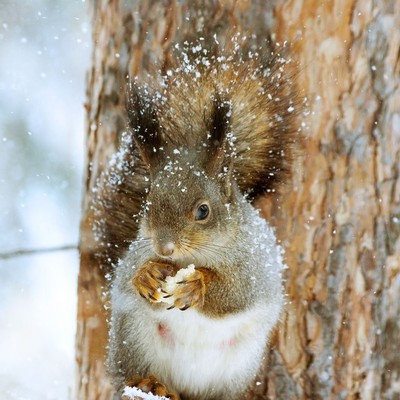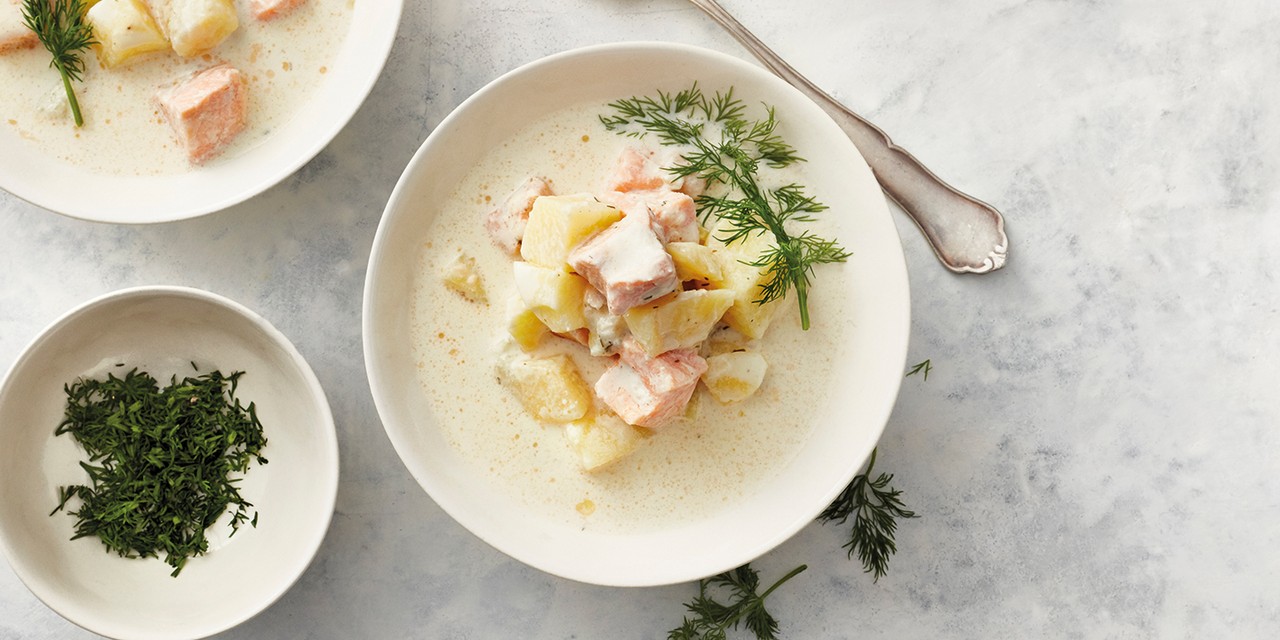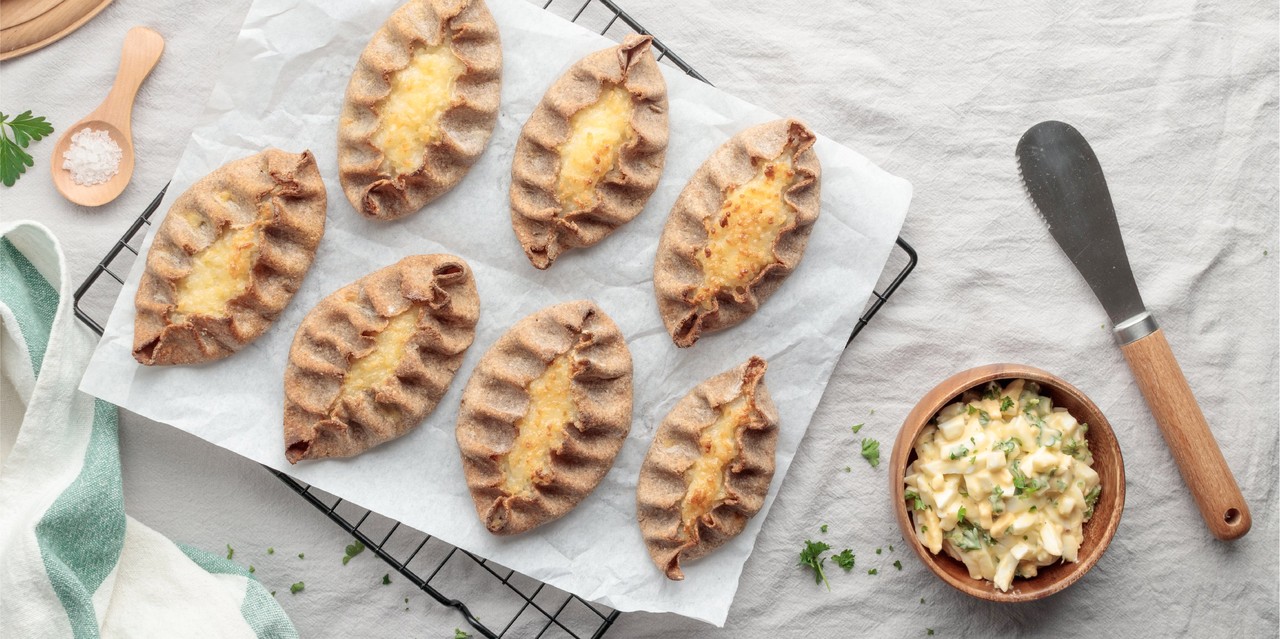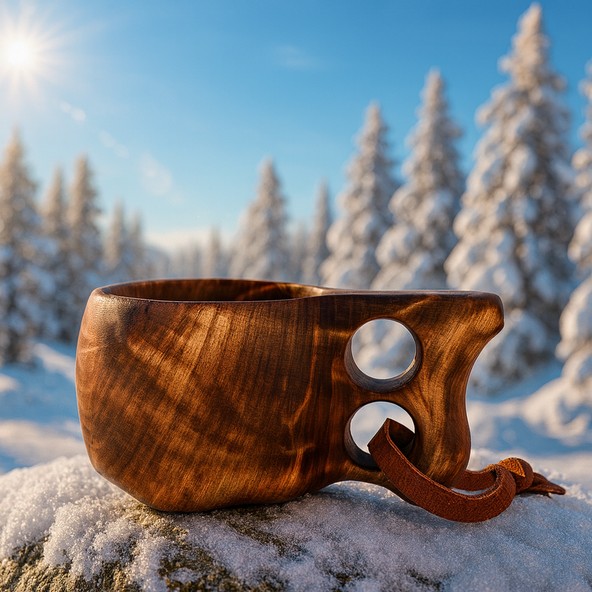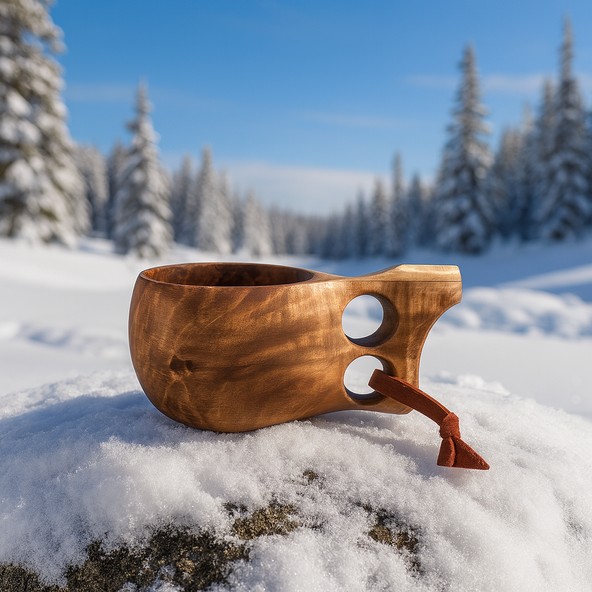A handmade Christmas elf is gifted with every order 🎄🎁 A handmade Christmas elf is gifted with every order 🎄🎁
Finland, an unforgettable journey to the land of a thousand lakes
Are your bags packed? Let’s go! Join me on a journey to the heart of Finland, a Nordic country of varied landscapes where nature blends with culture and a balanced lifestyle. Discover the breathtaking scenery of a thousand lakes, vast forests and the Northern Lights that illuminate the night sky. Immerse yourself in Finnish traditions, from relaxing saunas to Sami culture.
From local cuisine to travel tips, this article offers a captivating glimpse into this Nordic paradise.

Anne-Laure Compain



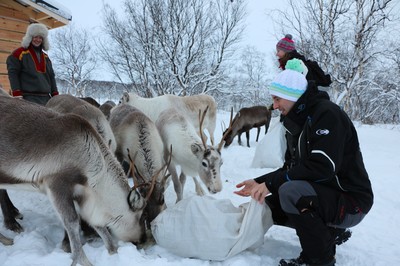

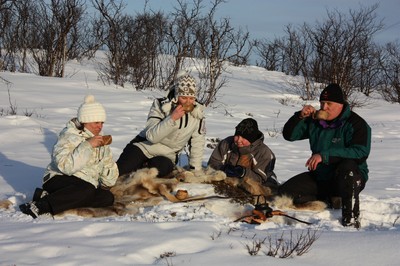
Map of Finland, your visual guide to discovering this Nordic gem

Finland is a European country located in Scandinavia. It borders Russia to the east, Sweden to the west and Norway to the north. It's a very large country, stretching 1160 km from north to south, with a small population of approximately 16 inhabitants per m2. By way of comparison, France has 107 inhabitants per m2 and Germany 236 inhabitants per m2.
Finland is often referred to as the land of a thousand lakes, as it boasts no fewer than 188,000 lakes. In fact, seals can be seen in this region. But Finland doesn't just have lakes, it also has forests. It's the most forested country in Europe! 72% of the country is covered in trees. 🌳
Finland abounds in marvellous landscapes and offers its inhabitants and travellers memorable sights such as the Northern Lights.
One thing is clear: when you're out and about in Finland, everyone is respectful, and no one shouts or pushes in the queues. Public transport is extremely clean, and above all, it feels good!
The history of Finland, from its origins to the present day
The Sami
Finland was originally inhabited by indigenous peoples such as the Sami. These nomadic peoples lived by hunting, fishing, gathering and reindeer herding.
Swedish rule
From the Middle Ages onwards, Finland was gradually brought under Swedish rule for six centuries. During that period, Finland adopted Swedish customs, language, politics and culture.
Russian domination
In 1809, Finland came under the control of Imperial Russia as an autonomous grand duchy. The Tsar of Russia was the Grand Duke of Finland. This allowed Finland to keep its banks, its currency, and to create its own army.
The Great Wars
After the Russian Revolution in 1917, Finland proclaimed its independence, which led to a civil war in Finland but secured its independence. It is a country often involved in conflicts between Russia and other countries in the world, such as Sweden. In the end, Finland lost territory but kept its independence!
European Union
After the Second World War, Finland sought to establish good relations with its neighbors. In 1995, it joined the European Union and adopted the euro in 2002. On April 4, 2023, Finland joined NATO to protect itself from Russia.
National symbol in blue and white, the flag of Finland

The Finnish flag, also called "Siniristilippu" in Finnish, represents a blue Scandinavian cross on a white background. The flag was adopted by the Finnish people on May 29, 1918, a year after the country gained independence from Russia.
- Blue represents the color of the country's many lakes
- White represents the snow that covers the whole country in winter
The flag is a source of pride for Finns, reminding them that they won their independence from Sweden and Russia.

Would you like to receive more information about Finland? 🇫🇮
Browse the fascinating regions and landscapes of Finland and discover their traditions and history. By subscribing, you'll receive information about Finland once a week.
The euro, Finland's currency
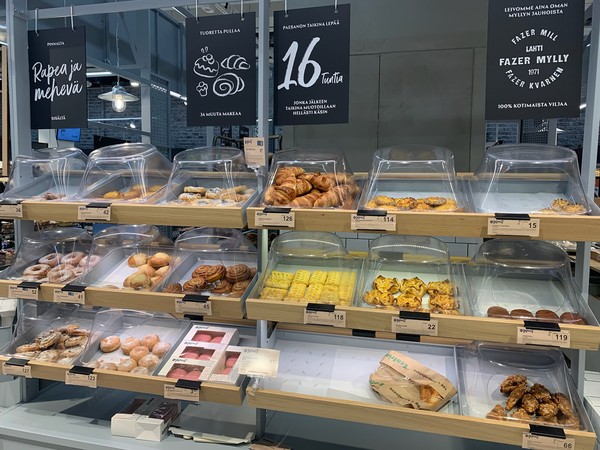
In 2002, seven years after Finland joined the European Union, it switched to the euro, the currency common to most EU countries.
The euro replaced the Finnish mark, the currency used in Finland from 1860 to 2002. The changeover to the euro made it possible to:
- Strengthen the country's economy
- Facilitate trade
Helsinki, the capital of Finland between tradition and modernity
- A modern capital
Renowned for its innovative, contemporary design, Helsinki is packed with historic and tourist attractions such as Suomenlinna Fortress, Market Square and Parliament.
- A densely populated but clean city
Helsinki is known for being a warm, safe and clean city, despite its high population density (650,000 inhabitants in the city center and 1.5 million inhabitants in Greater Helsinki). Public transport is clean, comfortable and in perfect condition, which encourages people to take the trams, the metro or the bus.
- A city surrounded by water
Helsinki is located on a peninsula of around 300 islands in the Baltic Sea. These islands offer a magnificent landscape to explore.
One of the best-known islands is Suomenlinna Fortress, a UNESCO World Heritage Site.
Next up is the island of Santahamina, home to Finland's Grand National Defense School. This military base provides military training (military service, intensive training and diplomas). This military force serves as a reminder to neighboring countries that Finland can defend itself.



Finland at the cutting edge of technology, discover the country's technological advances

Have you ever heard of the Nokia brand? Did you know it's a Finnish company?
Home to Nokia, Finland is one of the pioneers of mobile telephony and the Internet. It's also one of the most connected countries in the world, offering free wifi in many places (restaurants, bars, parks...).
Founded in 1865 in the city of Espoo, Nokia was the starting point for mobile communication technologies and 3G. It played a key role in the evolution from cell phones to smartphones. Today, Nokia focuses on telecommunications networks, 5G and connected devices.
In addition to Nokia, Finland is recognized as a world leader in innovation and new technologies. The country encourages entrepreneurship and supports the creation of new technologies (artificial intelligence, video games, etc.).
Finland is also very committed to sustainable technologies, and many companies run on green electricity. Kupilka being the first!
From Lapland to the Archipelago, between wilderness and bustling cities
Finland is divided into 19 regions, most of which are concentrated in southern Finland. Lapland is Finland's largest region, located in the very north of the country, north of the Arctic Circle. Here are Finland's 6 main regions.

Lapland
Lapland is Finland's most northerly region, home to vast stretches of wilderness, forests, lakes, reindeer herds and the Northern Lights.

North Karelia
A region that has often been a source of conflict with Russia, but which abounds in forests and lakes. It's a quiet region, the secret refuge of the Finnish people.

Northern Savonia
Savonia (North and South) is a very rural region. There are vast lakes and forests as far as the eye can see. A great place to see seals!

Central Finland
Located in Central Finland, this region is well known for its popular ski resorts and winter sports activities. Many national parks are also located here.

Ostrobothnia
This region in western Finland has numerous archipelagos and islands. The coastal landscape, together with its maritime cultures, evokes postcard-perfect scenes.

Uusimaa
Region of Finland's capital, Helsinki! It is Finland's most populous region and the starting point for the main road, rail and air routes. It is the country's economic and cultural center.
Why do people say that Finland is the happiest country in the world?
Education
Benevolence and equality
The place of nature
The sauna
Finland has long been recognized for its innovative and highly compelling education system. It focuses on streamlined learning where everyone can find their place and succeed. Learn more about education.
Finns are neutral at first glance but have a heart of gold. They may not say hello in the morning so as not to disturb your private sphere. In 1906, they became the first people in Europe to obtain the right to vote regardless of gender.
Finns love nature and their breathtaking landscapes. They roam their country summer and winter alike, while scrupulously respecting nature. Vast forests and crystal-clear lakes promote relaxation and tranquility. Learn more about nature.
There are over 3 million saunas in Finland! The sauna helps purify the body and helps you relax. The aim is to stay 10 minutes in a sauna at between 80° and 130°, then throw yourself into the nearest body of water (a shower, a frozen lake, the Baltic Sea). Find out more about the sauna.
Why is the Finnish education system the envy of many countries?
Finnish education is the envy of many, because it is excellent and of very high quality.
The PISA (Programme for International Student Assessment) ranking has repeatedly placed Finland in the top 10 countries. For each country, a panel of 15-year-olds is judged on scientific subjects. In 2005, Finland came first out of 70, in 2016 5th and in 2018 7th.

How does Finland teach its children?
- Schooling starts at age 7 and ends at age 19.
- Classes start at 8 a.m. and finish at 2 p.m., with a 30-minute lunch break.
- Afternoons are devoted to many homework assignments and extra-curricular activities.
- Education is free, as are materials (pencils, books, notebooks), the canteen and school transport.
- Instead of promoting competition between students, the Finnish education system encourages collaboration and cooperation. Students often work in groups to solve problems and develop essential social skills.
| Ages 7 to 13 | From 14 to 16 years old | After 16 years |
|---|---|---|
| 6 years lower level (ala-aste) | 3 years of higher level (ymä-aste) | Choice of vocational training or high school |
In higher education in Finland, there are more women than men (60% versus 40%). Finnish education therefore produces more women with doctorates who then take a break in their careers to care for their families and later return to work.
A little anecdote: Finland pays a "parental salary" to mothers or fathers who stay at home to raise their children.
Art and music are very important to Finns, and many of the great names in music, design and architecture are Finnish.
Discover the 10 emblems that represent and tell the story of Finland
| Emblem | Description |
|---|---|
Flag | Blue and white flag forming a blue Scandinavian cross on a white background. The blue recalls the lakes and the white the snow. The flag was created in 1918. |
Coat of arms | The coat of arms depicts a golden lion on a red background holding a sword, symbolizing strength and courage, and surrounded by nine silver roses representing Finland's historic provinces. The coat of arms dates back to 1557 |
The national animal | The brown bear: nicknamed the king of the forest by the Finns. The first peoples of Finland considered the bear a sacred animal and honored it. |
The national bird | Whooper swans: this graceful white bird has been nesting in Finland for years. In spring, when the swans return from migration, the Finnish skies are filled with these birds with their distinctive song. |
National flower | Lily of the valley: the first flower to emerge after the harsh Finnish winters. The lily of the valley is featured in many Finnish poems and music. Lily of the valley is also a traditional feminine name in Finnish, "kielo". |
National tree | Birch: this tall tree with its white trunk and lush leaves is the king of Finnish forests. The Finns use the birch in many ways: the wood for building houses, the sap as a drink and the bark to make objects. |
National fish | Perch: the most common and easily identifiable fish in Finnish waters. It is very easy to catch and can be found on every market and table in Finland. |
National rock | Granite: granite originally covered the entire country. Today, pinkish granite outcrops can be found in every region. Granite has also been used in the construction of many buildings in Finland. |
National insect | The 7-spotted ladybug: a recognizable animal among the others with its beautiful red color. It's also a totally harmless insect! |
National sport | Pesäpallo: also known as Finnish baseball. It is played by two teams of nine players, who compete to score points by throwing and hitting a ball with a bat. Ice hockey remains by far the most popular sport in Finland. |
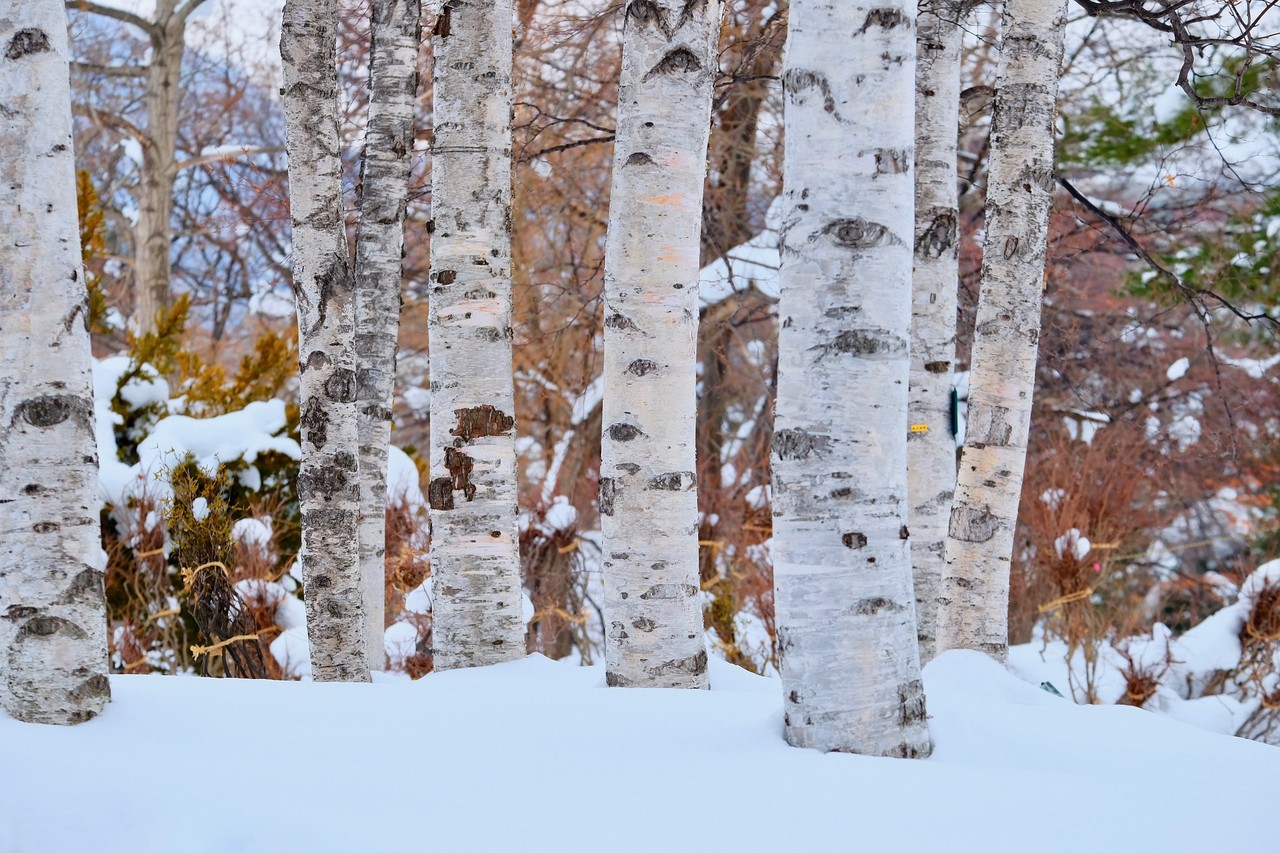
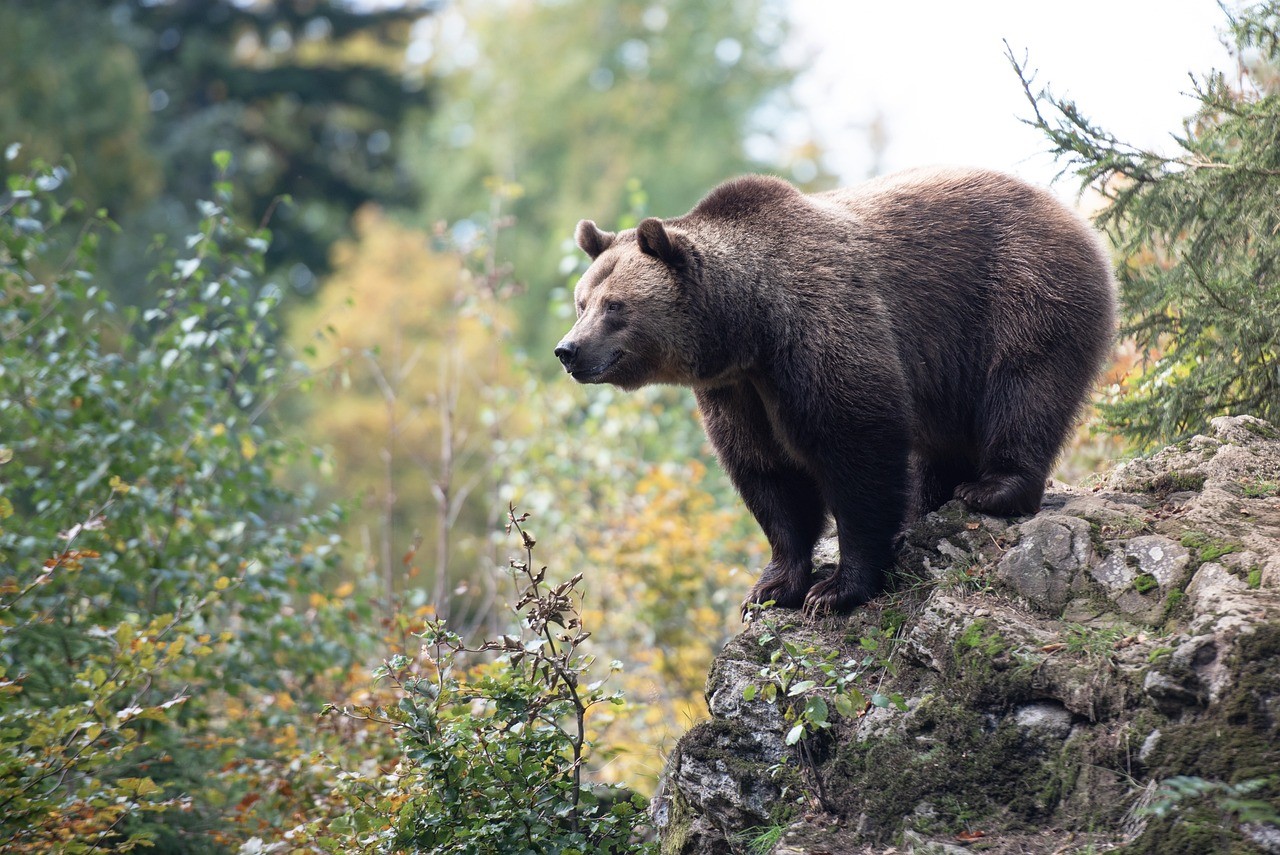



The Finnish sauna, a thousand-year-old tradition of well-being and relaxation



The sauna is an inseparable part of Finnish life, part of their customs and daily routine.
Originally, the sauna was regarded as a temple of nature where we came to recharge our bodies and minds. This is still true today, and you'll soon realize it if you travel to Finland. You'll find them in hotels, guesthouses, in the great outdoors, and even in Helsinki!
Saunas have evolved through the ages, from simple stone-heated holes in slopes to veritable little chalets! There are 3 types of sauna:
- The classic wood-fired sauna, found in country homes or on lakeshores.
- Electric saunas for city homes and apartments
- The traditional smoke sauna
Saunas in Finland are practiced in the nude! You need to heat your naked body to temperatures of up to 130°C for at least 10 minutes to induce real sweating. Then get out of the sauna and plunge into cold water (the lake, the Baltic Sea or the shower). The aim is to repeat this cycle two or three times for total body regeneration.
Young birch leaves are often put in bouquets and used to whip the body and stimulate blood circulation (see photo above).
Temperatures in Finland, from freezing cold to balmy summer days
In Finland, the climate is very different depending on where you are. In the north of Finland, in Lapland, the climate is arctic, while in the south it is continental.
- Winters are cold, and even harsh in the north and east of Finland, where temperatures can reach -40°C due to cold winds from Siberia. Snow covers the entire country in winter, making it ideal for winter sports such as skiing, dog sledding and snowmobiling.
- In summer, the thermometer can climb to 30°C in the south of the country. The countryside is lush and green, ideal for hiking, cycling and camping.
Summer in Finland also means longer days and the midnight sun north of the Arctic Circle.
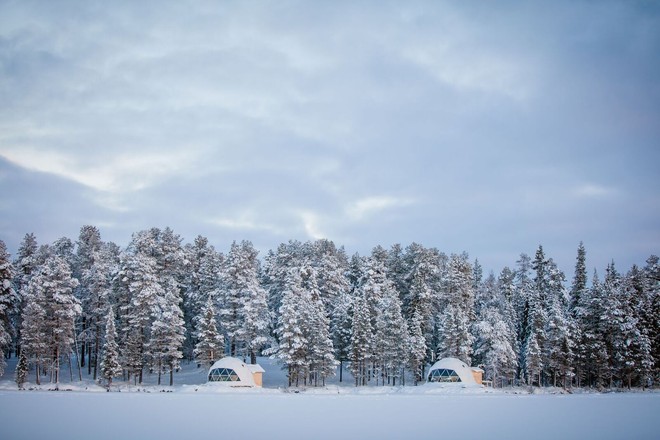
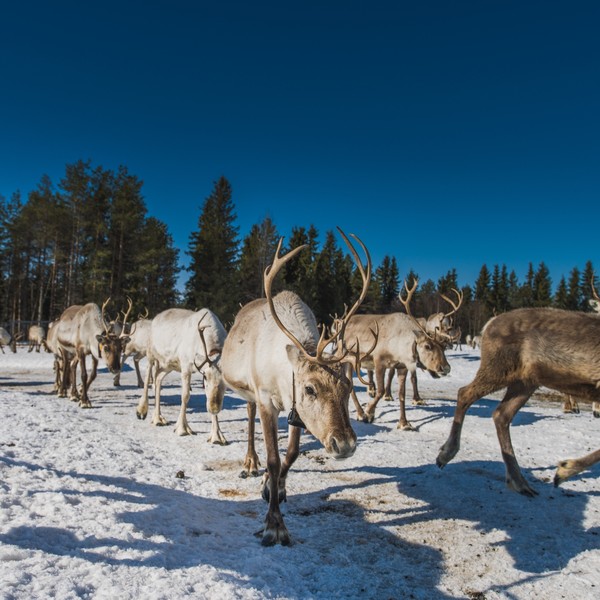

When day and night are endless in Finland
These natural phenomena occur in the Arctic and Antarctic regions. In Finland, these phenomena can be seen in northern Lapland, above the Arctic Circle.
The midnight sun, or polar day
In summer, around the solstice, the sun doesn't sink low enough to create darkness, so it's visible for several hours at a time. The duration of this phenomenon depends on where you are: at the Arctic Circle, it lasts 24 hours, while at the Pole, it lasts 6 months.
The landscape is then illuminated by a yellow-orange light, allowing inhabitants to enjoy an endless day and appreciate nature.
It feels like time stands still and the only thing to do is enjoy what nature has to offer.
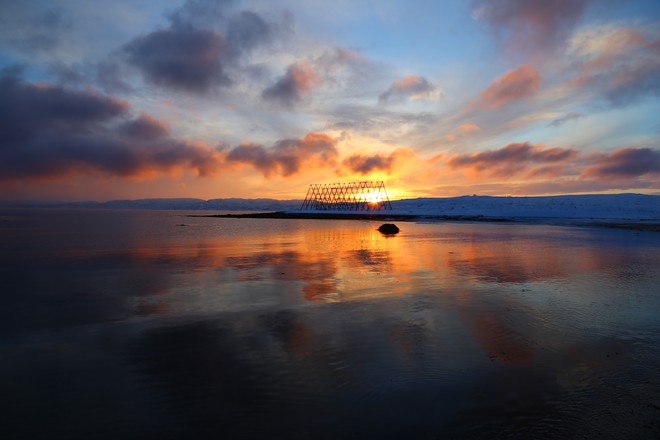
Polar night, or Kaamos
In winter, the same phenomenon occurs as in summer, but reversed and shorter in duration. During the polar night, the sun remains below the horizon for several weeks, sometimes even months. Towns and cities are in total darkness, with only faint light at dusk.
The polar night has a stronger impact than the midnight sun. Indeed, when one lives in a place without daylight, it affects mood, morale, sleep, and energy.
The dance of lights — set off to discover the Northern Lights
- Where to observe the Northern Lights?
The best place to observe the Northern Lights is in the wilderness, far from towns and villages, because there must be no light pollution in the sky to see them. You also need a dark, cloudless sky.
- When to watch the Northern Lights?
In Finland, the best months to see the Northern Lights are January and February, when the nights are long and cold. But even if the conditions are right, you can't be sure of seeing any!
- Why do the aurora borealis form?
It's a bit technical, but to put it simply, the aurora borealis are formed by collisions between solar wind particles and atmospheric particles. This creates green waves in the sky.
- How to predict the Northern Lights?
The Finnish Meteorological Institute provides forecasts to help you find the right time to see the Northern Lights, but this is unreliable given that it is a natural phenomenon.

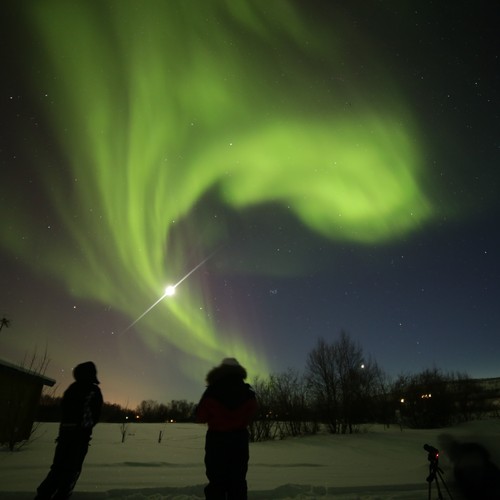
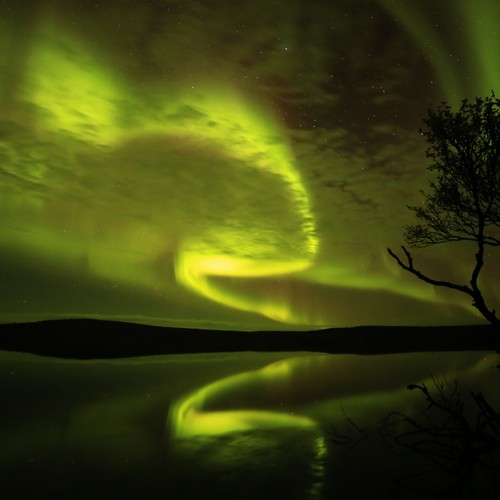
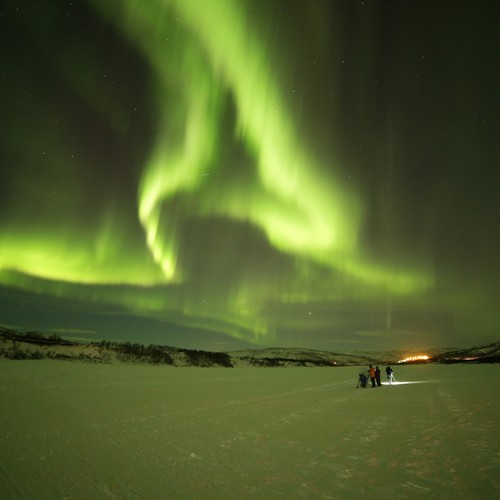
A natural paradise: Finland's rich biodiversity of flora and fauna
Finland offers a wide variety of natural habitats, such as forests, lakes, marshes, tundra and archipelagos. This great diversity of habitats allows the country to support a very diverse flora and fauna.
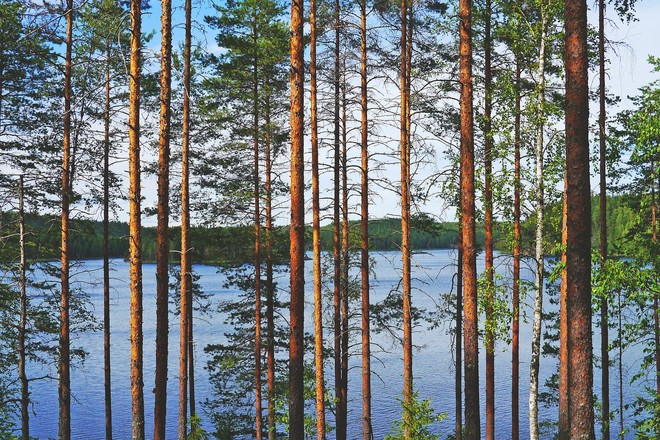
Finnish flora
Summer is the best time to appreciate Scandinavian flora. Already on the plane as we approach Helsinki, we realize just how important forests are to the country, even though Helsinki is in the least forested part of the country!
- The most common trees in Finland are birch, pine and spruce, but a little further east, in Karelia, you'll find the curly birch, a species of birch that is resistant to strong climatic changes and produces extremely beautiful wood.
- Lichen is abundant in Finland because of the northern climate. It is an important source of food for reindeer and elk.
- More common trees, such as juniper and elderberry, are also used in the manufacture of wood products.
- Berries are everywhere in Finland! You can find many edible berries such as lingonberries, bilberries, raspberries and blackberries.
Lakka, or cloudberry, is a small berry that grows in Lapland. It is easily distinguished from other berries by its bright orange color. It's a slightly sweet, slightly acidic berry used in liqueurs, jams, desserts and jellies.
Every year, around 50 million kilos of berries are harvested, or 10kg per Finn.
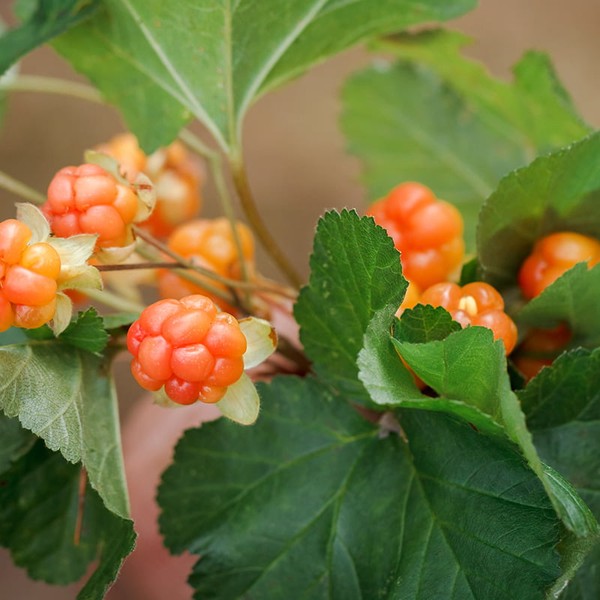
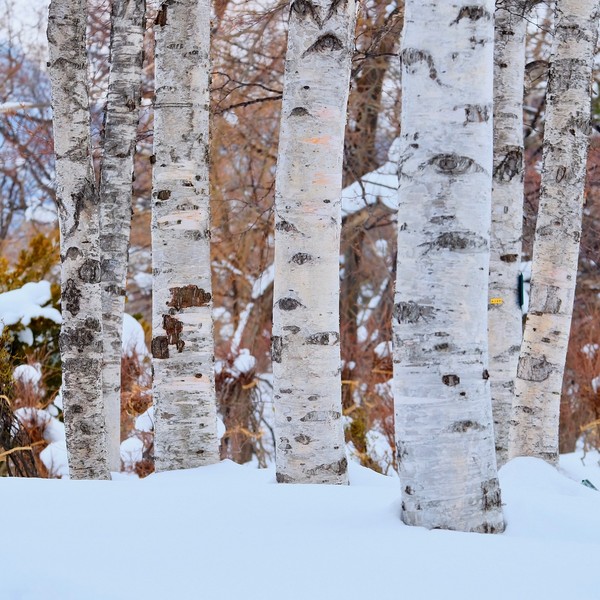

Finnish wildlife
Forests are inhabited by animals, some of which are pleasant to encounter, like squirrels, hares, owls or foxes, but others are a little more fearsome, like wolves, bears or lynxes. But don't worry, if you come across one, it's because you really wanted to! They are wild animals that live in forested areas seldom frequented by locals and tourists. The most devastating animal in Finland is the moose. In spring, when it migrates north, it crosses roads and collides with cars, causing serious accidents.
![brown bear]()
Brown bear
"Kahru"
Found on the Russian border and in Lapland, the brown bear emerges from hibernation in March and begins to forage for berries, plants and honey.
![Reindeer]()
Reindeer
"Poro"
Reindeer are free in Finland, even though they belong to farms. They are appreciated by everyone and seen by children as Santa's reindeer.
![Elk]()
Elk
"Hirvi"
A shy, peaceful animal much larger than a reindeer. A bull elk can weigh up to 600kg. It feeds on vegetation and aquatic plants.
![ringed seal]()
Lake Saimaa marbled seal
"Pusa hispida saimensis"
This species of seal is one of the most threatened on Earth, numbering only 400 individuals. It is one of the rare seal species to live in fresh water.
![Wolf]()
Wolf
"Susi"
Wolves will do anything to stay away from humans, so it's unlikely you'll come across a wolf in Finland. They live in both western and eastern Finland.
![lynx]()
Lynx
"Ilves"
With their highly developed sense of smell and hearing, lynxes are difficult to spot and avoid humans. Their fur is gray in winter and russet in summer.
![Lapland Owl]()
Lapland Owl
"Pöllö"
Owls are very common in Lapland and nest in the vast forests.
![Mimic chickadee]()
Mimic chickadee
"Kuukkeli"
This little bird is not afraid of hikers, as it likes to steal food.
![Squirrel]()
Squirrel
"Orava"
Squirrels change color according to the season, turning white in winter and therefore difficult to see.

Would you like to receive more information about Finland? 🇫🇮
Browse the fascinating regions and landscapes of Finland and discover their traditions and history. By subscribing, you'll receive information about Finland once a week.
An unforgettable journey of adventure, authenticity and Finnish hospitality
If you're planning a trip to Finland, it's because you love nature!
Before you leave, you need to know about the Right of Everyone (Joka miehen oikeus). This right entitles you to roam the country without any restrictions other than respect for the environment, nature and wildlife. The fact that there are no fences on the territory will make your task easier! So you can roam freely in natural areas, picking berries or mushrooms, fishing or hunting.
The question of when to go to Finland is a personal choice, although it's a beautiful country whatever the season. Here are a few tips, depending on the season.
Visit Finland in summer
Summer in Finland is hard to predict, with temperatures ranging from 14°C to 28°C! It's best to bring rain gear and a sweater. Life in Finland is very expensive, and Finnish taste in clothing is atypical. So, to avoid increasing your holiday expenses, it's better to pack a heavier suitcase.

Visit Finland in winter
In winter, getting around is a little more complicated because of the snow, but the roads are very well maintained, so you can drive safely with the right vehicle.
As far as clothing is concerned, you'll need to pack clothes for skiing, bearing in mind that your clothes won't be warm enough if you go up to Lapland. With this in mind, you can be sure you won't be cold when you arrive.
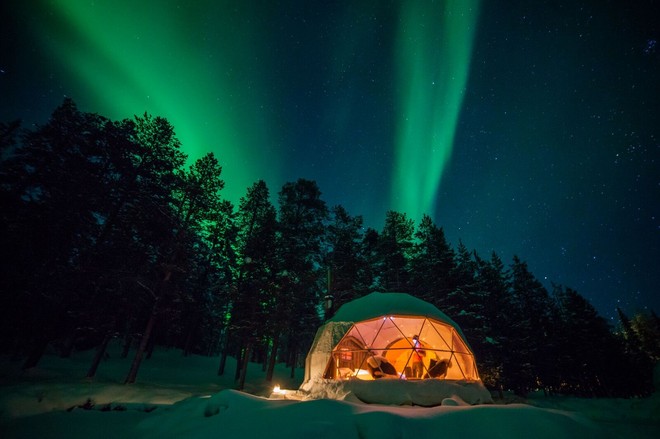
As you travel around Finland, you'll notice that Finns are somewhat reserved at first, but they have hearts as big as the world. They are a very hospitable people who will welcome you and help you.
Wherever you are in Finland, you'll always find a place to sleep. Finnish accommodations are carefully insulated against the cold and the noise. They are also nicely decorated (Scandinavian furnishings and decor are a must!) and most have a sauna. And if you come in the summer, you can always pitch your tent wherever you like.
It's possible to cross the country by train in Finland!
To get from city to city in Finland, you can travel by car, train or plane. However, overland journeys can be very long, as Finland is a very large country. It is therefore advisable to take the plane, which is cheap in Finland.
A small example: to reach Lapland from the capital, it's 900km to Rovaniemi and 1300km to Ivalo!
As I've just told you, flying is convenient because it's fast, but what about crossing the country from south to north by train? In Finland, you can take the train from the capital to Rovaniemi, the capital of Lapland and the official Santa Claus village. This journey, which takes an average of 10 hours, is perfect for an overnight trip. You leave Helsinki at 6pm and arrive in Lapland at 8am the next morning. The slowness of the trains is ideal for overnight journeys, where silence is king and you can get a good night's sleep (especially if you have a couchette). For a few extra euros, you can have a berth with a private shower and toilet!

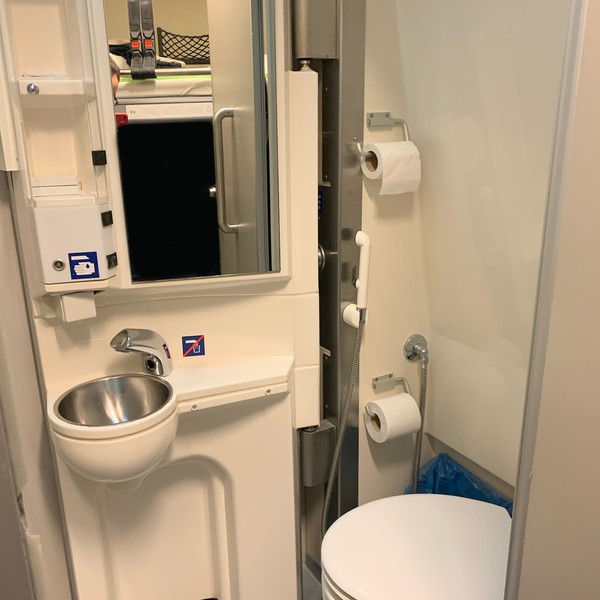
Finnish Lapland, total immersion in unspoilt wilderness
- Lapland, as mentioned above, lies in the very north of Finland, above the Arctic Circle. Its capital is Rovaniemi, home to Santa Claus' official village and crossed by the Arctic Circle.
- Lapland is a very wild region, where the landscapes have retained all their authenticity and offer an infinite horizon. Here you'll find majestic pine and birch forests, as well as lakes, rivers, hills and Arctic tundra.
Arctic tundra is a biome found in polar climatic zones. It is home to grasses, lichen and moss. It's an important place for reindeer herders, who drive their reindeer here every summer.

- In Lapland, you may come across the Sami, an indigenous people who have lived here for centuries. Their customs, crafts, music and traditional dress have permeated the entire region.
- If you want to visit a reindeer farm, Lapland is the place to do it!
- Lapland offers a multitude of exciting activities! You can go on a snowmobile safari, dog sledding, reindeer sledding, snow scootering, ice fishing, cross-country skiing or snowshoeing.

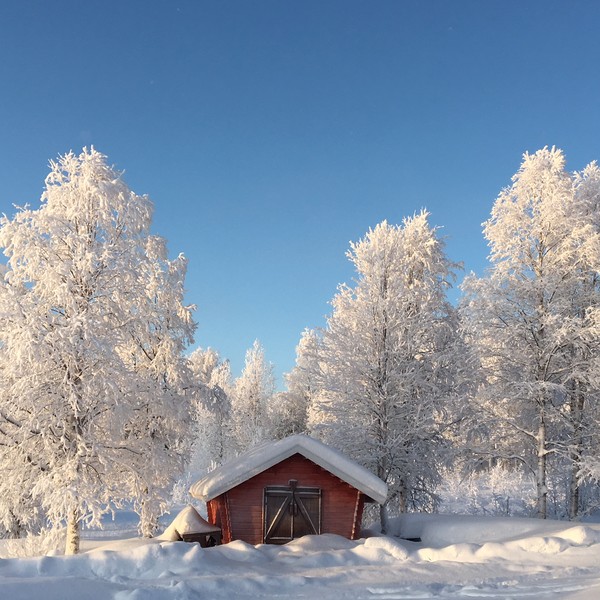
Rovaniemi, the gateway to the magic of Christmas
Rovaniemi is the starting point for anyone wanting to visit Lapland. From Helsinki or Oulu, you can arrive in Rovaniemi by plane, train or car!
The city
Before we tell you about Santa's village, let's take a look at the wonderful things this town has to offer:
- For sports enthusiasts: the Ounasvaara hill offers excellent cross-country and alpine ski trails.
- For museum and nature enthusiasts: the Forest and Nature Museum introduces you to the local flora and fauna and presents ancestral traditions.
- For shopping addicts: Rovaniemi's Christmas market is ideal for bringing back souvenirs, discovering local products and buying Christmas presents.
Santa's village
Santa's village is located in Rovaniemi, Finnish Lapland. It's open all year round and believe me, no matter what season you go, the Christmas spirit will always be present! Discover the activities to do at Santa's village:
- Jump over the Arctic Circle. Here you'll find a line on the ground indicating that the Arctic Circle passes this way.
- Meet Santa Claus. After a few minutes of waiting, you'll be able to chat with Santa, take a photo and give him your letter.
- Send a letter. Santa's post office lets you send letters or postcards to your loved ones.
- Discover Santa's workshop. Watch Santa's elves at work making toys.
- Take a reindeer sleigh ride. Meet Santa's reindeer and take a sleigh ride pulled by a reindeer.
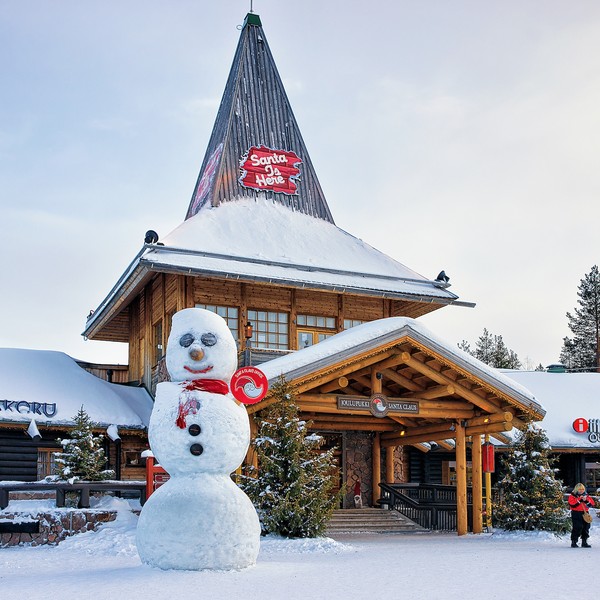
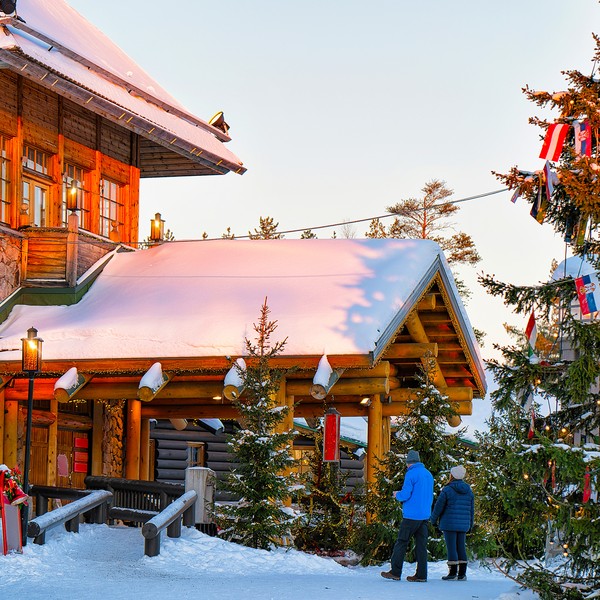

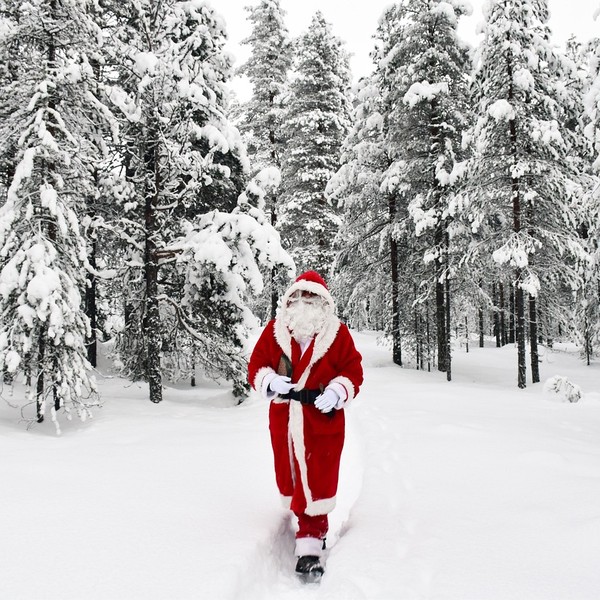

Nordic flavours, discover what we eat in Finland
In Finland, dietetics has long been part of the family diet, and sugar has a bad reputation!
- Breakfast in Finland is savory, with porridge, rye bread, ham, cheese, fruit and coffee or tea.
- Lunch at work takes place over a 30-minute break between 11am and midday. Just enough time for a stew or salad and a cup of coffee.
- The evening meal is at 5 p.m. with the family, and is the main meal of the day. You'll often have soup, followed by fish and vegetables, and a dessert of berries or ice cream.
Finns love ice cream! In fact, they're so good, you've got to try them! 🍦
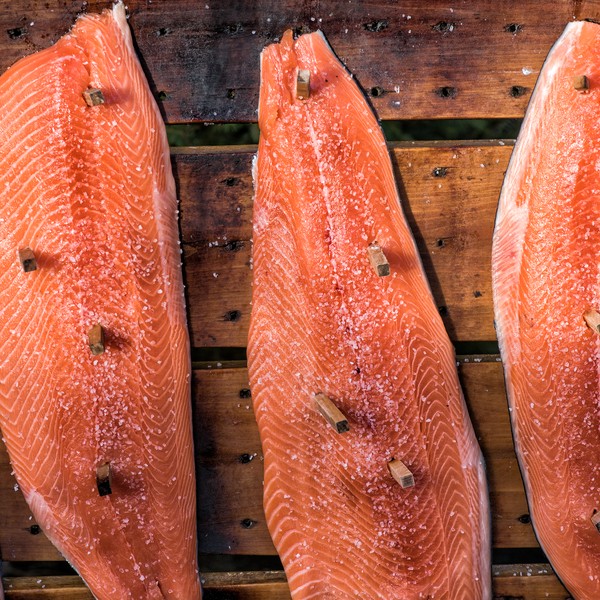
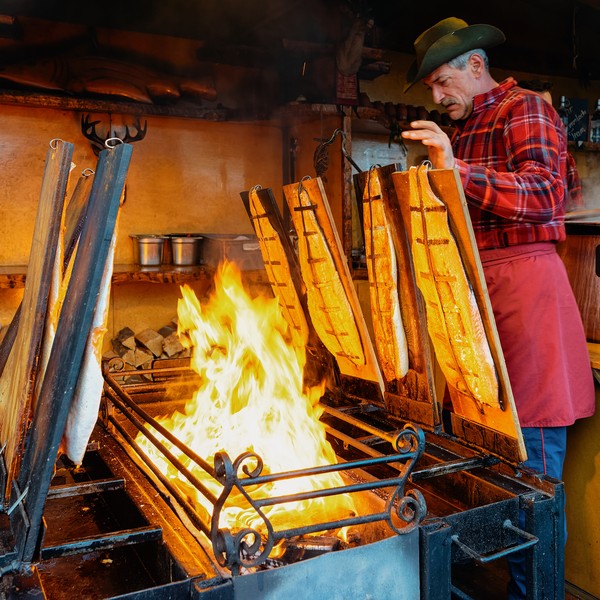
The fish on your plate
- Fish from the 180,000 lakes: Arctic char, perch, pike...
- Fish from the Baltic Sea: salmon and herring.
It's worth noting that the Baltic Sea is so low in salt that freshwater fish can also be found there.
The meats on your plate
- Reindeer meat can be enjoyed all year round in Finland, in stews, as chops, smoked, as sausage or as pâté.
- In autumn, for the more curious, you can taste elk or bear.
It's worth noting that the Finns are very heavy coffee drinkers at any time of day! They are the world's leading coffee consumers! Their coffee is really excellent.
Finnish recipes to discover and definitely try
Pinaattiletut
The classic yet exquisite spinach pancakes, as beautiful as they are indulgent.
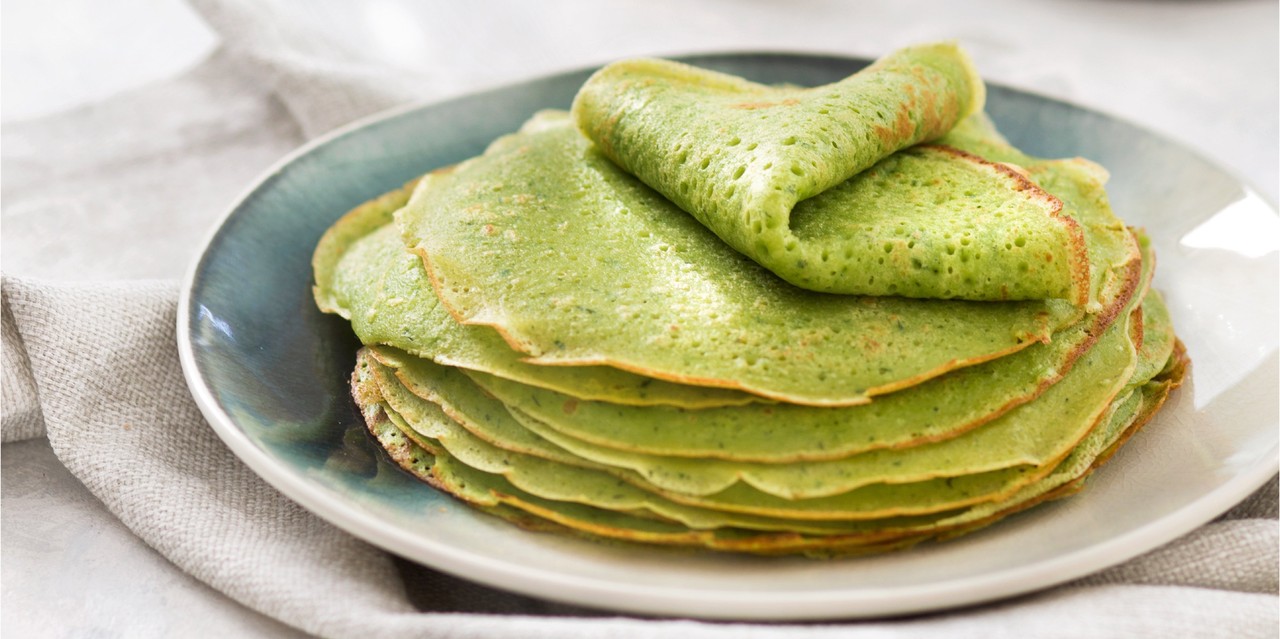
Kalakukko
Surprising but delicious fish in a rye bread crust. A specialty from the east of the country.
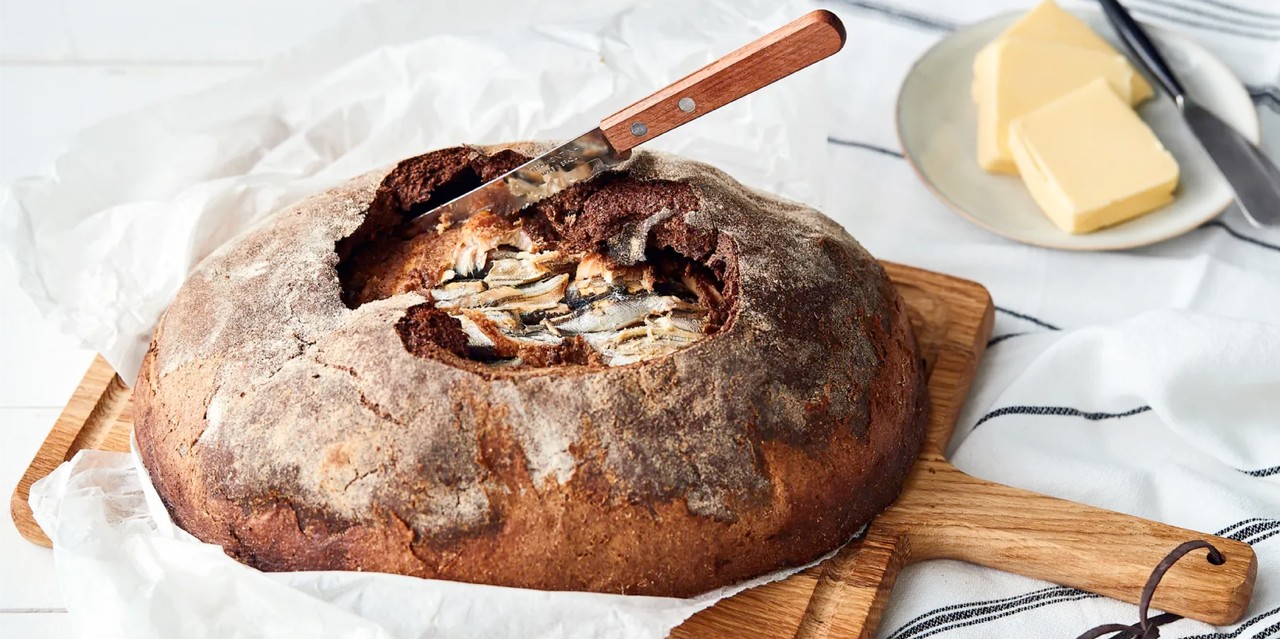
Janssoninkiusaus
A gratin layered with thin slices of potato and herring simmered in cream. Western specialty.

Graavilohi
This raw, cured salmon is sprinkled with dill and eaten with a mustard sauce, rye bread and potatoes.
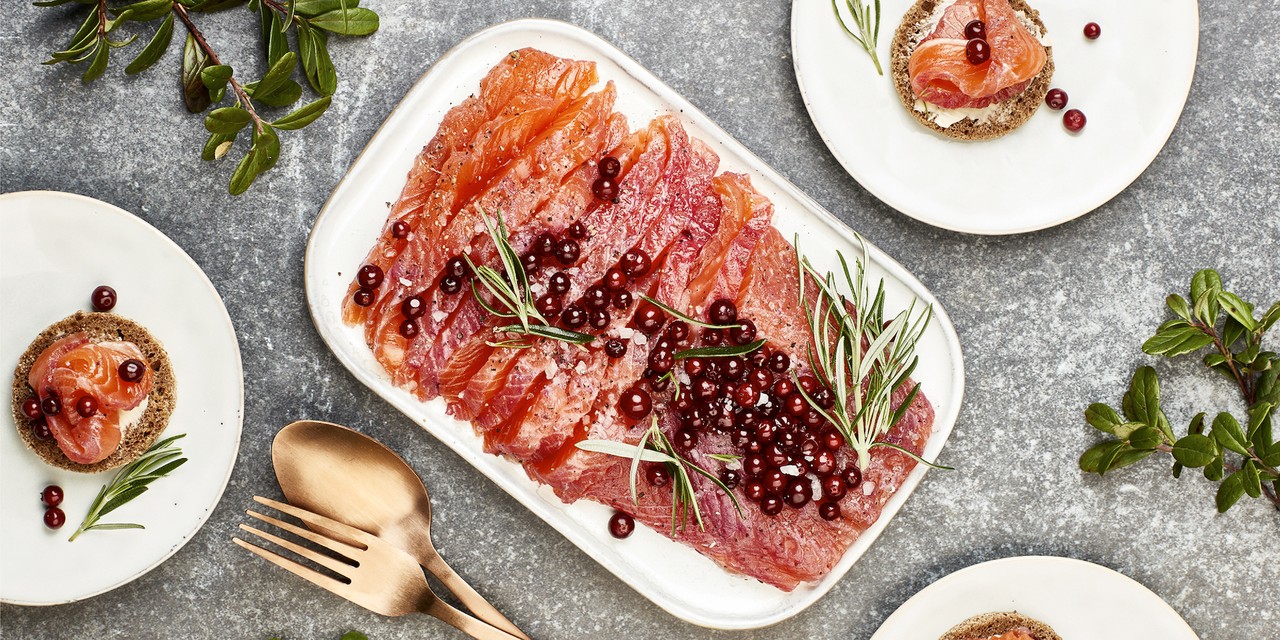
Korvapuustit
There's nothing more indulgent than these cinnamon rolls sprinkled with sugar!
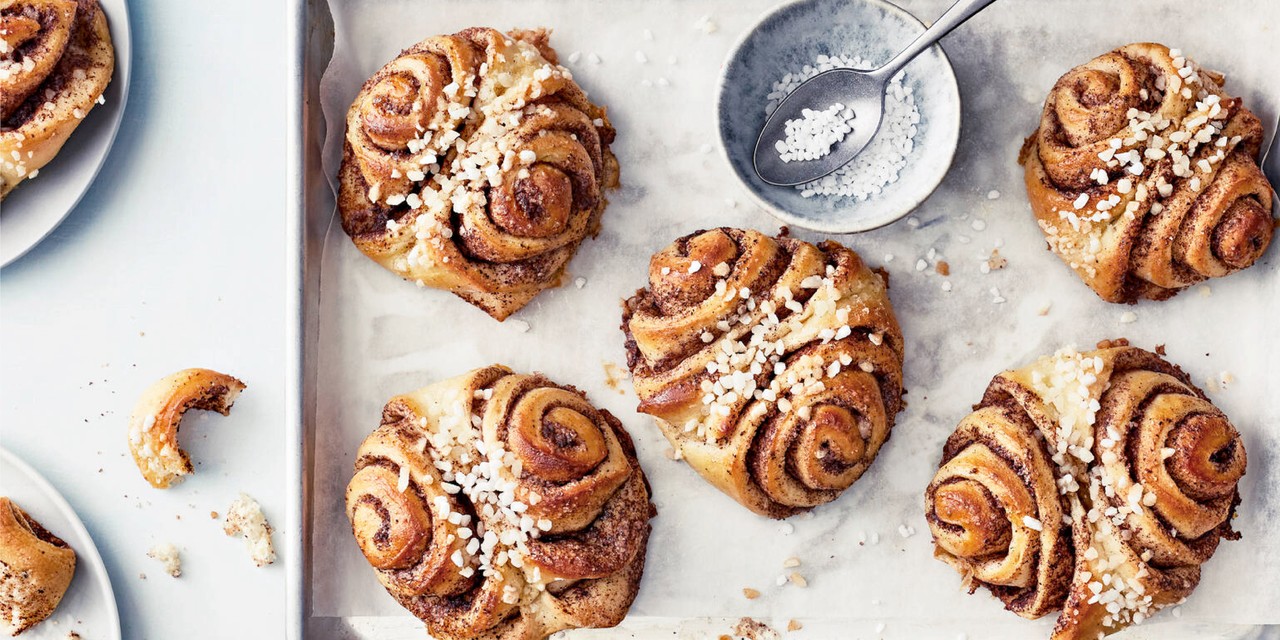
Poronkäristys
Steamed reindeer stew with mashed potatoes and cranberries.
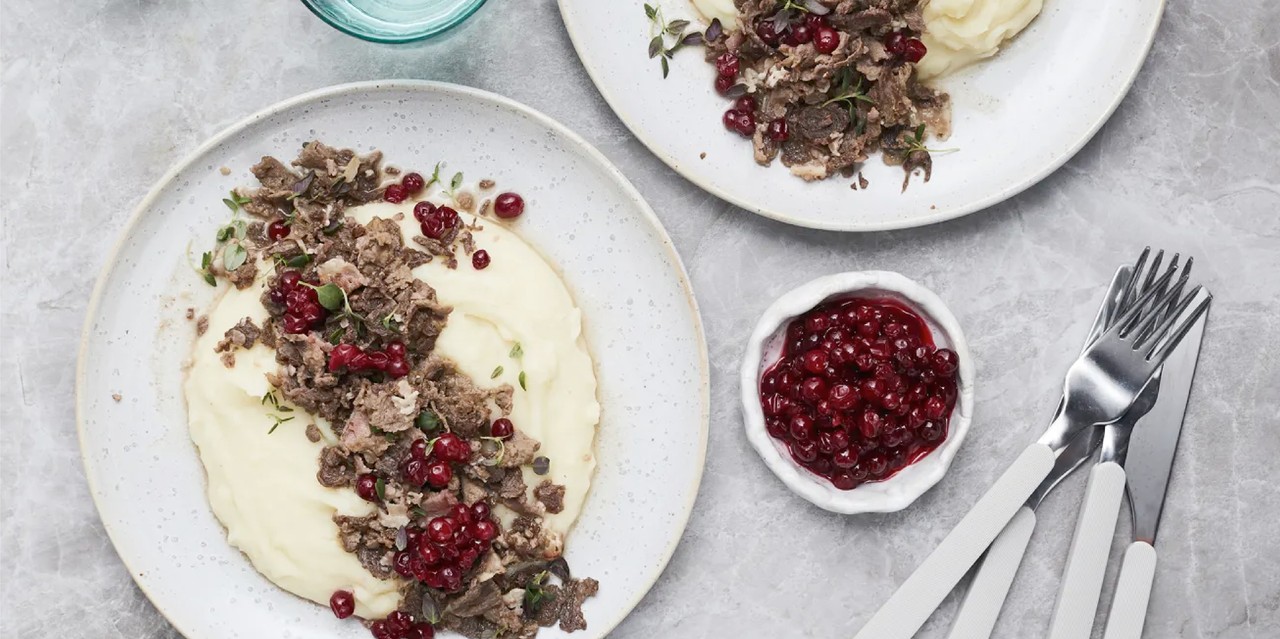
Unusual outings, activities and accommodation in Finland
Finland's many activities offer locals and tourists alike an unforgettable experience and a reconnection with nature.
Sleeping in a glass igloo

For the lucky few, sleeping in a glass igloo can be the most beautiful experience of their life! That's because glass igloos are positioned in strategic locations that allow you to observe the northern lights.
The glass igloo gives you a change of scenery: you sleep out in nature and may see a reindeer or a hare pass by when you wake. You lie down on the bed, look up and see a magnificent starry sky with no clouds or light pollution. A guaranteed return to the essentials.
The glass igloos are heated with a wood-burning stove and are very cozy and comfortable.
Visit a reindeer farm

A visit to a reindeer farm allows you to discover the Sami culture, immerse yourself in their daily lives as reindeer herders and learn about their ancestral way of life.
Reindeer are the symbol of Lapland, and to come and see them in their natural state will enable you to see them up close, feed them and understand their role in the local culture and economy.
The reindeer herders will be delighted to explain their trade, the challenges they face and the migration of their reindeer, as well as inviting you to their table to sample a traditional dish.
Staying at the Ice Hotel
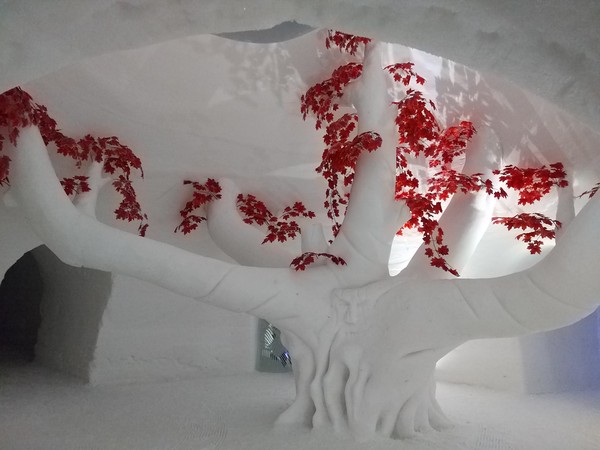
If you want to immerse yourself as fully as possible in the winter and polar environment, this is the best experience.
Cold weather alert! The whole hotel is made of ice, including the beds, restaurant and bar! It offers an incredible blend of luxurious comfort and the beauty of ice.
The beds are equipped with insulating mattresses and thermal sleeping bags for even greater comfort.
Ice hotels are true works of art that are rebuilt every year. Each year, the hotel chooses a theme and decorates the hotel accordingly. The ice sculpture work is incredibly beautiful and meticulous.
Fishing for poison under the ice
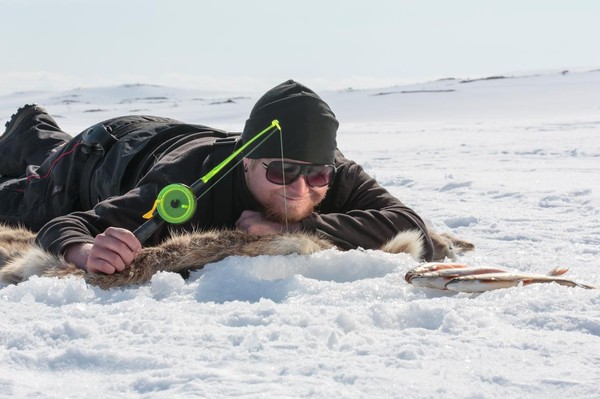
Ice fishing, or fishing on the ice, is a very fun activity to do with young and old alike! You find yourself on a frozen lake, cutting a hole in the ice to try to catch a fish.
It's an extraordinary experience for fishing enthusiasts, because you never know which fish is swimming beneath your feet, or what your catch will be!
Ice fishing offers breathtaking scenery, with snow and snow-covered forests as far as the eye can see, and no noise. You just need to be very well dressed, as it's around -15°C outside.
Dog sledding
Dog sledding is an unforgettable and rather noisy activity!
Before setting off into the wilds of Lapland, you'll learn about dog breeding (mostly Siberian huskies) and, above all, how to steer the sled.
Just before you set off, you'll meet the pack who will steer your sled. This is not the time to pet them, as they're too excited to run! Save your petting for the end of the ride, to thank and congratulate them.
This activity is a real connection with the animal, as you have to help the dogs pull the sled uphill, but also brake the sled downhill. You need to watch and understand your dogs, so that, for example, you can stop the sled when one of them is relieving itself.
Dog sledding can be done alone or in pairs! The driver sits at the back of the sled, and the passenger sits in the sled under a reindeer skin to keep out the cold.
Snowmobiling in Lapland
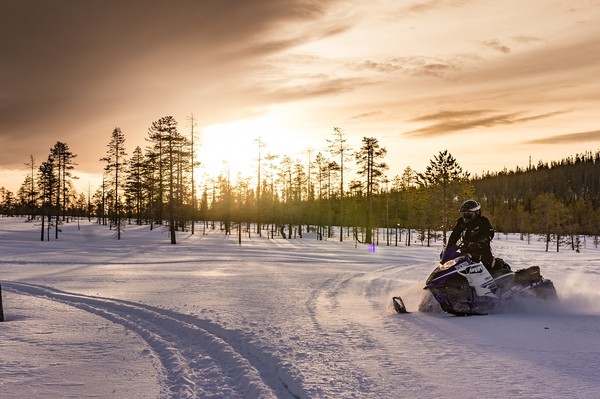
Driving a snowmobile is an extraordinary experience, whether you're experienced or not! It can be intimidating at first because snowmobiles are powerful, but once you get the hang of it it's great to ride and the adrenaline rushes over you very quickly.
If you're worried about getting cold, don't worry — you'll have full suits and heated grips!
A snowmobile safari lets you visit remote places inaccessible by car, offering breathtaking views.
Bring back a piece of Finland: authentic souvenirs to take home
Sami craftsmanship
When returning from Lapland, there are some essentials to bring back, such as:
- Wooden cups called kuksa
- Reindeer skins and antlers
- Replicas of Lappish costumes
- Traditional jewelry

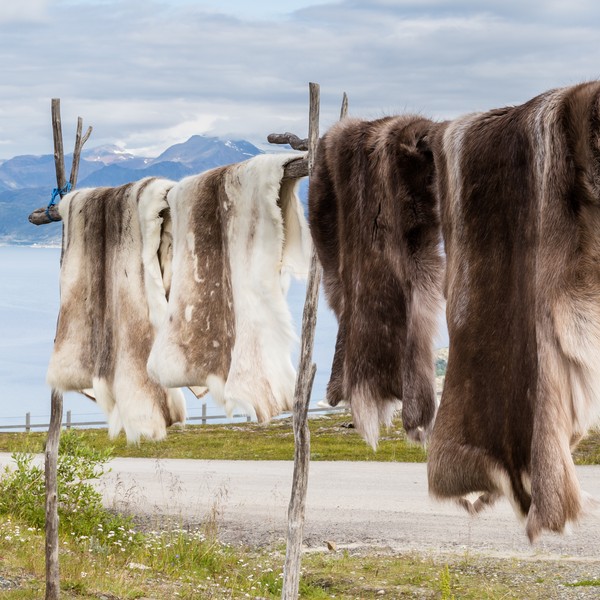



Scandinavian decor
Finnish design is both aesthetic, functional and very ergonomic. There are three very well-known Finnish brands for tableware and home textiles:
- Littala: Finnish brand founded in 1881 that offers a wide selection of tableware, glassware and home accessories. The brand's glass products are timeless and very luxurious (photo below left).
- Marimekko: founded in 1951, this brand offers a wide range of home textiles known worldwide for their bold, colorful prints that perfectly reflect the optimism and joy of the Finnish people (photo below right).
- Kupilka: a Finnish brand founded in 1996 that was the first to use green electricity throughout its manufacturing chain. Kupilka offers tableware in Karéline, a material combining Finnish wood and plastic.
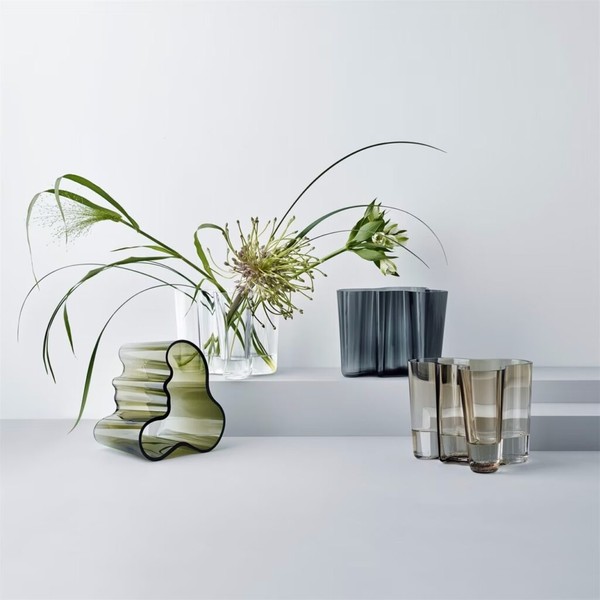

Moomins
Moomins are hippopotamus-like cartoon characters. This Finnish cartoon has conquered the world with its gentle, lovable characters and adaptations in books, comics, TV series and films. The story of the Moomins is about friendship, tolerance, nature and self-discovery.
This cartoon has an important place in Finnish culture. Many derivative products are available, including clothing, crockery, cuddly toys and decorations.
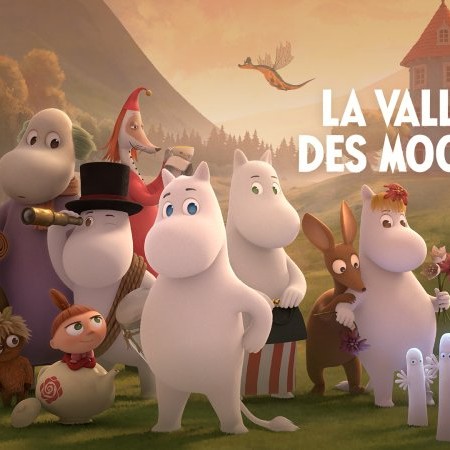

The food
Even if you come to Finland by plane, there are some things you can bring back to eat at home:
- Dried reindeer meat or reindeer sausages travel very well by plane.
- Finnish cheese, which you can buy in 500g pieces
- Licorice is everywhere, in every store! That’s normal given that Finland is the world’s biggest licorice consumer.
- Fazer chocolates should fill your suitcases, bags, pockets and, above all, your stomachs! They have an exceptional taste and are available in tablet form, as individual chocolates and as chocolate bars.
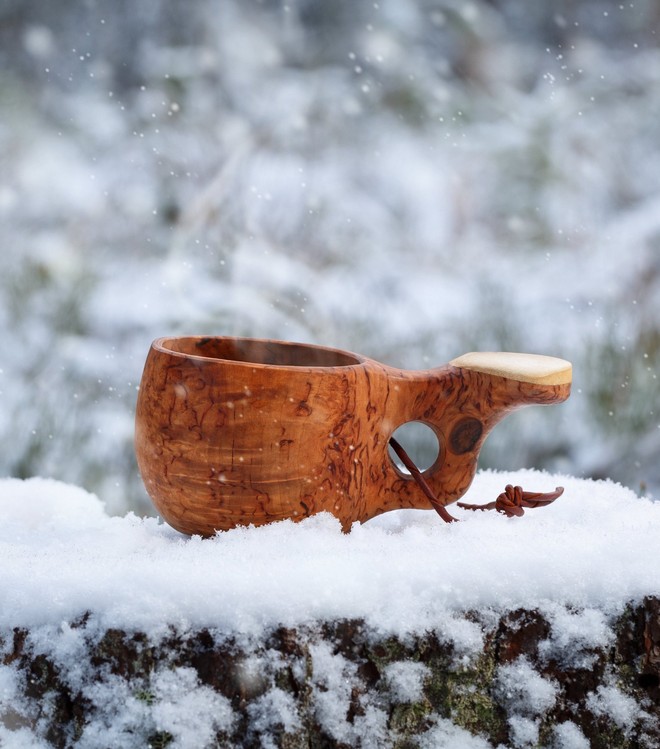
Couldn't bring home a wooden souvenir from Finland?
Too short on time, or is your suitcase already too full to bring back souvenirs? Our Kuksa Shop offers hand-carved wooden tableware from Lapland. You have a wide selection of traditional kuksa and cutlery.
Discover Finnish, a few words to know
Finnish is not an easy language to learn, pronounce or write. But when you're planning a trip to Finland, it's a good idea to know a few Finnish words.
English is widely spoken in Finland, so you'll have no trouble making yourself understood if you speak English.
A few tips:
- In Finnish, every letter in a word is pronounced; there are no silent letters.
- There is no masculine or feminine; "hän" means "he" or "she".
- When you have two identical letters in a row, you lengthen the pronunciation of that letter.
| English | Finnish | English | Finnish |
|---|---|---|---|
| Hello | Hei / Terve | Goodbye | Hei hei |
| Thank you | Kiitos | Sorry | Anteeksi |
| Yes | Joo | No | Ei |
| Do you speak english ? | Puhutteko englantia? | I don't speak finnish | En puhu suomea |
| I don't understand | En ymmärrä | Help | Apua |
| Welcome | Tervetuloa | Finland | Suomi |
| Restaurant | Ravintola | Hotel | Hotelli |
| What is your name ? | Mikä nimenne | My name is Anne-Laure | Olen Anne-Laure |
| How are you ? | Miten menee? | Have a good day | Hyvää päivänjatkoa |
Christmas Game, win wooden kuksa cups
Experience an authentic and traditional Christmas with our giveaway! Try your luck to win one of our handmade wooden kuksa cups, specially selected to brighten your holidays.
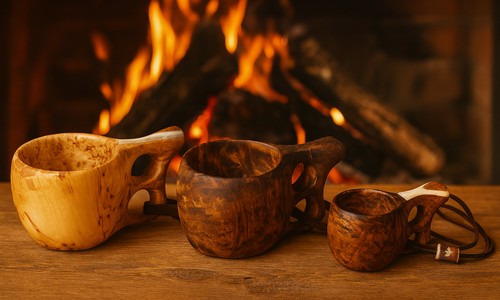
Unique and handcrafted Christmas gift ideas
And for Christmas, consider the gift wrapping option to delight your loved ones.
Would you like to learn more about Finland?
If you liked this article, you may also be interested in these other articles.

Anne-Laure Compain

Anne-Laure Compain

Anne-Laure Compain

Anne-Laure Compain
For Christmas, try to win one of our 3 favorite kuksa. A handmade wooden mug to celebrate the festive season. 🎄
To enter, add your email address below
Contest results on December 21. 🍀
